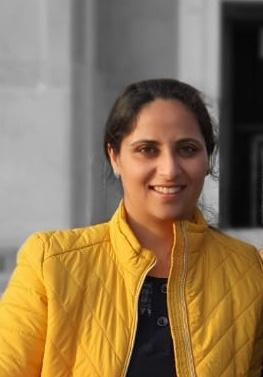Early Identification of Speech and Language Disorders in Children
- dhillongagan2008
- Jun 14, 2020
- 3 min read
Updated: Jun 21, 2020

Speech, a skill unique to humans, is one of the most important parts of language development in children. The development of language starts before birth – towards the end of pregnancy, the foetus begins to hear sounds and speech coming from outside the mother's body and can even recognise the mother's voice. From birth up till the age of five, children develop language at a rapid pace. In children, language development reflects the growth and maturation of the brain.
The stages of language development are universal among humans. However, the age and the pace at which a child learns language vary greatly among children. In a few children, the language development is either delayed or deviant from the norms.
Language delays are one of the most common developmental delays seen in children. According to the University of Michigan Health System, delayed speech or language development affects 5 to 10 percent of preschool-aged children. Studies also show that 25 to 90 percent of children with language impairment experience reading disorder, usually defined as poor reading achievement occurring after sufficient opportunity to learn to read. Reading disorder among school-aged children is estimated to be between 10 and 18 percent.
Though most of these children develop normal speech and language skills without treatment, a few of them may develop speech and language disorders. The early identification of these speech disorders is extremely important in these children because the delay in treatment in these cases may lead to missing out the critical language developmental window. According to experts, there is an important period of language development which is called “critical period of language development". This is the time duration from birth till five years of age. These first few years of life constitute the time during which the language develops rapidly and after which the language acquisition is much more difficult and ultimately less successful.
A few parents unintentionally miss this critical period of the child’s life leading to negative effects in her/his mental, physical, social, academic and vocational development.
Hearing and listening to language is the primary way young children learn. The skills achieved during this time lay the groundwork for later success with reading and writing, academics, social interactions, and career options and advancement. This makes early intervention for any speech/language or hearing problem, preferably before the age of three, very important.
Parents are often worried about the speech and language development of the child but sometimes fail to identify the symptoms indicative of language or speech disorder. It is very important that the parents are aware of these symptoms and start the much-needed early intervention needed.
Know some of the signs of speech and language disorders:-
(The child...)
Does not smile or interact with others (birth and older)
Does not babble (4-7 months)
Makes only a few sounds or gestures, such as pointing (7-12 months)
Does not understand what others say (7 months-2 years)
Speaks only a few words (12-18 months)
Words are not easily understood (18 months-2 years)
Does not put words together to make sentences (1.5-3 years)
Has trouble playing and talking with other children (2-3 years)
Has trouble with early reading and writing skills* (2.5-3 years)
*Early reading and writing skills include:
8 months–1 year: Likes to hear you talk and read; looks at pictures in books when you read
1–2 years: Makes sounds or words when looking at pictures in books; points or touches pictures in books when you name them; turns pages in books
2–3 years: Knows that books have a front and back; enjoys books that have rhymes; points to and names many pictures in books
Mrs. Deepika Sharma
The writer is a Consultant Audiologist and speech-language Pathologist
Comments